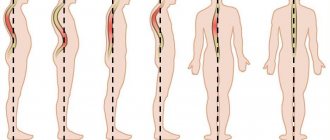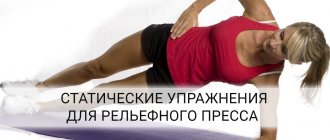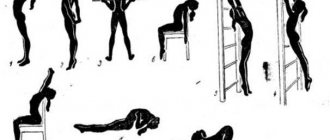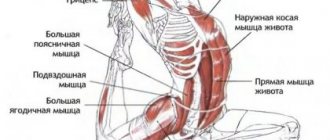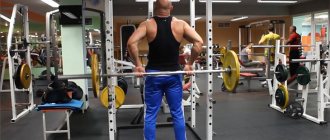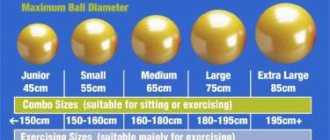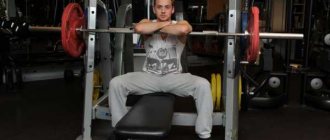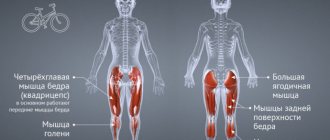Signs and symptoms
Problems with the spine in conditions of deteriorating ecology are aggravated by a predominantly sedentary lifestyle, abundant irregular meals, and foods harmful to humans. Often people turn to specialists with complaints of pain in the spine.
As a rule, these are mainly the cervical, thoracic and lumbar regions. In most cases, the doctor diagnoses “osteochondrosis” – dystrophic destruction of the cartilage and joints of the spine.
Often the disease creeps up unnoticed, as if accumulating disturbances in the body. At first, the first bell may not be noticed.
Some kind of heaviness in the back, discomfort, pulling, aching sensations that cannot be called pain. But somewhere between the shoulder blades there was something hidden. Then the person pays attention to general stiffness, a gradual loss of flexibility.
A sudden sudden movement causes pain, sometimes it slips in a passive state. There is noticeable numbness in the fingers.
Erroneously, these signs may indicate diseases of the internal organs: coronary heart disease, intercostal neuralgia, even pneumonia with difficulty breathing.
See also: Treatment of thoracic osteochondrosis
Special exercises
The process of treating the cervical spine is quite labor-intensive. To speed up this process, you need to perform exercises with a stick. Thanks to the gymnastic stick, the set of exercises will become more diverse. This item also has a positive effect on load redistribution. Due to the versatility and accessibility of this item, it can be used not only in the gym, but also in the patient’s home.
During the treatment of osteochondrosis, a gymnastic stick can solve specific problems. When used, the back muscles in problem areas are relaxed, as well as the body is prepared for treatment with medications. Exercises with a stick are also allowed for preventive purposes.
If you use a set of methods in the treatment of cervical osteochondrosis, the disease may completely disappear over time. When using a gymnastic stick, the effectiveness of treatment will increase significantly:
- To perform the first lesson, you need to take a standing position, with your feet shoulder-width apart. The patient needs to grasp the two ends of the stick with his hands and pull them forward. You need to perform rotational movements in front of you with the stick. In each direction you need to make 10 to 12 movements.
- To perform the second lesson, you need to remain in the same position. The stick must be held in your hands, trying to grab its ends. We make movements with our hands so that the stick is either in a vertical or horizontal position. The exercise is performed at least ten times.
- The next lesson is performed in a standing position. This lesson is aimed at stabilizing the patient's breathing. In order to perform this exercise correctly, you need to use the services of a doctor or trainer. While inhaling deeply, the patient needs to raise his outstretched arms with the gymnastic stick up, and while exhaling, lower them.
- To perform the next exercise, you need to raise your arms holding the stick up in the starting position. As you inhale, the patient needs to bend the body in the lumbar region, and as you exhale, return to the starting position. The patient should perform this activity no more than 7 times.
Gymnastics with a stick should only be performed if the patient has undergone preliminary training. You must perform the movements as carefully as possible so as not to injure yourself. You should also not make sudden movements or turns. This can lead to further damage to the spinal column.
For cervicothoracic osteochondrosis, physical therapy is truly highly effective. Before performing it, the patient must consult a doctor. Only a specialist will be able to assess the patient’s condition and determine the benefits or harms of performing exercises. This will ensure high effectiveness of treatment. Proper exercise, a balanced diet and saturation of the body with vitamins will definitely bring a positive effect. You can also do yoga and swimming.
Osteochondrotic lesions of the thoracic vertebrae most often occur due to physical inactivity, when the patient sits for hours on end in front of the computer, and even hunches over. A similar pathology already watches us at our desks at school age. During this period, we carry heavy backpacks with textbooks, sit hunched over in class, etc.
This pathology of the thoracic vertebrae affects mainly young people 25-35 years of age, and specialists are not always able to diagnose it, since the pathology often takes the form of other disorders, masquerading as angina symptoms or a gastric ulcer.
What causes painful manifestations in the thoracic spine
Here are the reasons that contribute to deviations from the norm:
- predisposition due to heredity;
- heavy physical activity associated with professional activities;
- passive lifestyle;
- metabolic disease;
- rachiocampsis;
- injuries;
- infectious diseases;
- ecology (air, drinking water);
- overtraining;
- stress.
Self-medication or neglect of these signs is unacceptable. To avoid mistaking one disease for another with similar symptoms, you should see a doctor. Only a specialist will figure out where the pain comes from, what its nature is and what to do in this case.
Effective diagnostic methods are known:
- palpation;
- X-ray;
- Ultrasound;
- magnetic resonance, computed tomography.
Carefully conducted studies will allow you to most accurately diagnose the extent of the disease, determine the regimen for eliminating the exacerbation , and then conservation or the final procedure for healing.
Exercises to strengthen the muscles of the upper back
Performed for diseases of the shoulder and hip joints
Ex. 1. Starting position: stand against the wall. Press your heels, buttocks, shoulder blades and the back of your head tightly against the wall. Raise your arms straight above your head so that your elbows and the backs of your hands are pressed against the wall. Make sure that your arms do not bend at the elbows. Don't lift your body off the wall. Fix the achieved position for 1 minute, then slowly lower your arms and relax.
Ex. 2. Performed on the floor. Starting position: lie on your stomach, stretch your arms forward. Raise your straightened arms and torso up as high as possible, look forward. Hold the position for 20-30 seconds, then slowly lower down. Then perform the exercise dynamically at a very slow pace, smoothly raising your arms and torso up and just as smoothly lowering it down, 8-10 times.
Ex. 3. Performed on the floor. Starting position: lie on your stomach. Bend your arms at the elbows. Place your palms so that your protruding thumbs touch your shoulders. Slowly bend over, lifting your upper body while bringing your shoulder blades and elbows together. The lower abdomen should remain pressed to the floor. When performing the exercise, make sure not to throw your head up - work only using the interscapular muscles.
Bend over as much as possible and bring your shoulder blades together as much as possible, fix the position for 30 seconds. Then slowly lower yourself to the starting position, take a breath and perform the exercise in a dynamic version: 8-10 slow movements up and down, remembering to contract and relax your shoulder blades.
Ex. 4. Performed on the floor. Lie on your stomach. Place your fingers on your temples, spread your elbows as far as possible and bend your torso, rising as high as possible. Stay in this position for 30-40 seconds and lower down. After a short rest, we do the same exercise in a dynamic version, slowly up and slowly down, about 10-15 deflections, lingering at the top point for 2-3 seconds. Attention! While performing the exercise, bend upward using the muscles of your upper back, while keeping your stomach completely pressed to the floor.
Ex. 5. Performed on the floor. Starting position: lie on your stomach, clasp your hands on your lower back. Bend your body upward and, bringing your shoulder blades together as much as possible, try to bring your elbows together. In this case, it is necessary to pay attention to the position of the head: the head should not stretch upward along with the body. You need to look down (you can put your chin on your chest). Try to hold the position for at least 30 seconds by tensing the interscapular muscles, not allowing your elbows to drop. Then slowly return to the starting position, touching your forehead to the floor, relaxing your shoulders and lowering your elbows down. After a short rest, perform a dynamic version of the exercise: 8-10 slow movements up and down, simultaneously bringing and lowering your elbows.
Ex. 6. Performed on the floor. Starting position: lie on your stomach. Place your arms straight along your body, palms down.
Without leaning on your hands, but without lifting your palms from the floor, slowly bend your torso, stretching up as high as possible, but your stomach should not leave the floor. Bend as far as possible and hold in this position for 30 seconds. Then slowly return to the starting position and after a short rest, perform a dynamic version of the exercise: slow up and down movements 8-10 times, very smoothly and without jerking. While performing the exercise, be careful not to throw your head back too high, but look straight ahead.
Attention! Some particularly diligent patients, when performing exercises No. 2-6, fix their legs, securing them under a cabinet or sofa, etc. Do not do this under any circumstances. Fixing your legs while performing these exercises can result in tearing or straining your back muscles.
- About the clinic About Doctor Savyak
- Employees
- Literature
- Nutrition for the spine and joints
- Diagnostics of the spine of children
- Treatment of osteochondrosis
- Price list for comprehensive programs for adults
© 2020 LLC "Clinic of Vertebrology"
All rights reserved; when copying materials, a link to the source site is required. Consent to the processing of personal data
source
Treatment of thoracic osteochondrosis
Based on research by specialists and scientists, comprehensive measures have been developed aimed at treating this problematic disease. A comprehensive attack on the disease is used:
- effects on internal organs (medicinal);
- and external (manual therapy, physiotherapy).
Both are designed to relieve pain during exacerbation of the disease, relieve inflammation, restore the strength of muscle tissue and nerve endings. The last stage of treatment is massage and physical therapy ( physical therapy) to consolidate the course and prevent relapse.
Rules for performing exercise therapy
In order for physical therapy to bring the most effective results and not harm your health, you must follow the rules for performing gymnastics:
- all exercises should be performed regularly several times a day, it is best to do them in the mornings and evenings, and if possible, during the day;
- it is necessary to avoid sudden movements and turns - so that the exercises do not end in damage to muscles and joints, perform them smoothly and slowly;
- you need to increase the load and pace of execution strictly gradually - you should not start the complex with the rhythmic and most difficult exercises;
- for exercise therapy, you should select those exercises that involve different muscle groups;
- While conducting a lesson, do not forget to monitor your well-being - monitor your breathing and pulse, if pain or discomfort occurs, rest, reduce the load or finish the lesson.
According to statistics, a well-chosen set of exercises and proper execution help relieve discomfort and pain in 80% of patients.
Exercises from a standing position
Various exercises can be used to treat the disease.
Gymnastics for osteochondrosis of the thoracic region is aimed at strengthening the core, especially the upper back. For the complex from a standing position, you will need dumbbells (0.5 - 1 kg for women, 2 kg for men).
Exercise 1. Raise your arms with dumbbells in front of you - raise and lower slowly.
Exercise 2. Hold straight arms with dumbbells in front of you or extending them to the sides for 10 seconds. In subsequent sessions, gradually increase the time to a minute.
Exercise 3. Dumbbell press - alternately raise your arms with dumbbells to your chest and back.
The complex with dumbbells effectively works the muscles of the back and arms, activates blood circulation and breaks up salts between the discs.
Exercises from a lying position
Exercise 1. “Plow” is a great stretch for the upper back muscles - lie on your back, stretch your legs and slowly lift them up, and then lower them behind your head. Repeat 5 to 15 times.
Exercise 2. Reverse press - lie on your stomach, put your feet against a wall or furniture, put your hands behind your head and lift your body, as if you were swinging the press only in the opposite direction.
Exercise 3. Addition to the second exercise - raising your torso, stay in this position, turn your head to the sides.
Exercise 4. “Cat” is a well-known exercise from school years. Get on all fours and arch your back up, then bend down. “Kitty” works well on the lower back.
Classes in the gym and pool
Those suffering from osteochondrosis experience compression of the vertebrae and compression of the discs - as a result, they become deformed and protruded, and the patient feels severe pain. To restore the optimal distance between the vertebrae, with thoracic osteochondrosis, you can perform the following exercise:
- Hanging on the bar - hang from the horizontal bar without leaning on your legs. This exercise is effective and should be performed as often as possible. If your physical capabilities do not allow you to hang without support on your legs, perform partial hangs: the bar is at chest level, your hands are holding the horizontal bar, and your legs are put forward, your feet rest on the floor and your torso is in a curved state - but the benefits of this option are lower.
- Spinal extension while walking or sitting - stretch the top of your head up. Exercise forms correct posture.
- Stretching in water - in a pool or pond, wearing an inflatable ring up to your armpits, go to a depth of 2 meters so that your feet do not touch the bottom, and remain in a “hanging” position for up to half an hour. Performing the exercise daily can cure a herniated disc without surgery.
About movement therapy
Under the supervision of a doctor, treatment of osteochondrosis at home is possible in the form of a special gymnastics complex. You can compile it yourself, together with your doctor, or use those posted on the Internet.
Among them, the author’s programs for the treatment of spinal ailments, which were developed by famous athletes and doctors, are very popular. For example, Alexandra Bonina, a sports physician and physical therapy doctor, or Dr. Bubnovsky, the founder of kinesitherapy - treatment with physical exercise with load.
Alexandra Bonina has developed a two-week course to strengthen the muscle corset that supports the spine. Spinal stretching exercises should be performed 30 minutes a day, five days a week.
Dr. Bubnovsky is a program for restoring lost functions of 20 exercises, which are performed in the gym on special simulators, but are also quite accessible at home. Kettlebells and dumbbells are convenient weights for such exercises. To stretch the spine, exercises with an expander or a stick are recommended.
Also, ancient yoga developed many asanas, twists, deflections and various poses that will help avoid ossification of articular cartilage.
https://youtu.be/qDJ7lIft8oo
And in cases where the disease does affect the thoracic spine, he recommends exercises to develop intervertebral discs. These are the same exercises for stretching the spine, such as squeezing the shoulder blades, arching, and push-ups.
Warm-up before physical therapy
Warm-up is necessary to mobilize and warm up the muscles before performing the main set of exercises. This is especially important the first time.
To warm up, do these simple exercises:
- Walk on your full leg, then on your heels and on your toes for 3-5 minutes. Keep your hands on your waist.
- Run in place with your elbows bent for 3-5 minutes.
- Raise your arms up, reach towards the ceiling, stretch your back muscles.
- Grab your shoulders with both palms, spread your elbows. Raise your elbows up one at a time, do this 10-15 times.
- First, do five head bends to stretch your cervical spine.
- Raise your arms up, tilt your body forward parallel to the floor, wait 10 seconds. Repeat 10 times.
- Do 10 side bends.
- Perform 3 back turns in the lumbar region to the right and left.
- Do 5 jumps to the left on two legs, 3 jumps on the right and left legs.
- IP (starting position) - sitting, legs forward, toes pulled, body straight. Lean forward, point your chin out, and press your toes together with your palms. Hold the position for 10 seconds and return back.
- IP - sitting, legs apart, knees bent, body straight. Bend forward, hands touching the floor. Repeat 5-10 times.
You can do exercises selectively, first without load, then lift light dumbbells, a gymnastic stick or a ball.
After warming up the back muscles, you can begin to perform the main complex for the treatment of cervical osteochondrosis.
